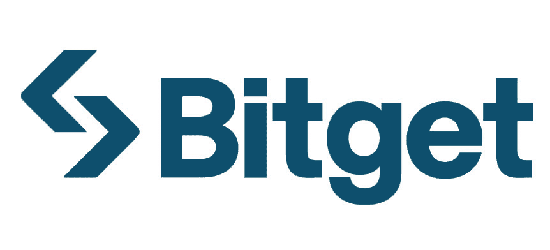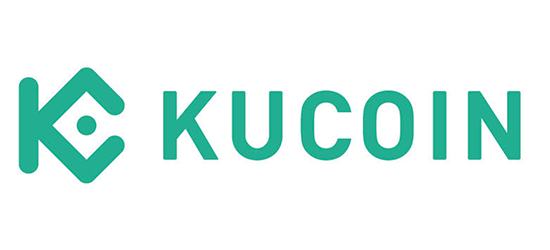
What Is Ethereum Dencun Upgrade?
2024 is expected to be a big year for Ethereum with its long-awaited Dencun upgrade. Read our article to discover what this upgrade is all about and how it will transform the leading blockchain network and beyond.
The Dencun upgrade also known as Cancun-Deneb, a highly anticipated upgrade of the world's leading blockchain Ethereum, is now officially set to go live on the Ethereum mainnet on March 13, 2024. This upgrade is one of the crypto industry's most anticipated events.
The Dencun upgrade promises to substantially boost scalability, security, and transaction speed and reduce costs, especially on Ethereum's layer-2 networks through a process known as proto-danksharding.
This upgrade represents a key phase in Ethereum's strategy to tackle scalability issues over the coming years.
In this article, we will try to explain what is behind the upcoming Ethereum upgrade in simple words and it how it will affect the network.
Ethereum 2.0: Understanding Vitalik's Roadmap
To understand the full significance of the Dencun upgrade, let’s have a quick look back at Ethereum’s development journey.
The Dencun upgrade, which follows last year's Shapella upgrade, is a key element of Ethereum's extensive roadmap to refine its infrastructure.
Ethereum is the leading platform for decentralized applications (dApps), which brought significant innovation in the blockchain space. It was the first to introduce the revolutionary technology known as smart contracts on a blockchain network.

Ethereum stood on the ground of several key trends in the current market, including decentralized finance (DeFi), non-fungible tokens (NFTs), GameFi, the metaverse, and Web3. However, the increased adoption of Ethereum by developers and users has put pressure on its infrastructure, wich resulted in the network congestion and higher transaction costs. Moreover, Ethereum's high energy consumption, attributed to its previous Proof-of-Work (PoW) consensus mechanism, has drawn criticism.
The Ethereum community and the Ethereum Foundation soon realized the urgent need for fundamental changes to make the leading dApp ecosystem more sustainable, scalable, and efficient.
Vitalik Buterin developed his vision of Ethereum roadmap that was broken down into several categories. This has led to the conceptualization of Ethereum 2.0—a series of critical upgrades aimed at making the Ethereum network more scalable, secure, and sustainable. This transition, known as the Ethereum 2.0 roadmap, has been a focal point for the Ethereum community in recent years.
The Ethereum 2.0 roadmap includes six main components: the Merge, the Surge, the Scourge, the Verge, the Purge, and the Splurge. The transition from a proof-of-work (PoW) to a proof-of-stake (PoS) consensus mechanism, known as The Merge, was successfully completed in September 2022.
The upcoming Dencun update, a part of the Surge phase, aims to enhance network scalability by introducing data sharding. This approach divides the blockchain into smaller segments, enabling quicker processing times and reduced transaction fees. The goal of the Surge is to increase the blockchain’s scalability, aiming for a throughput of 100,000 transactions per second across Ethereum and Layer 2 networks.
Overall, the Dencun upgrade includes five Ethereum Improvement Proposals (EIPs) that aim to expand data storage capabilities and reduce costs, without compromising on security or the ease of development for Layer 2 decentralized applications (DApps).
What is EIP?
The Ethereum Improvement Proposal (EIP) system is a formal mechanism for suggesting enhancements and modifications to the Ethereum blockchain. It functions as a forum for the Ethereum community, enabling anyone to submit an EIP that outlines technical specifications for proposed changes. These proposals act as discussion points for Ethereum developers, researchers, and users to deliberate, scrutinize, and make collective decisions on new features or updates for the blockchain.
EIPs play a key role in Ethereum's development roadmap, as each network upgrade comprises a set of EIPs that must be adopted by all Ethereum clients to ensure network consensus.
So what is Dencun Upgrade?
Ethereum has made an announcement on its GitHub page about the initiation of the Dencun upgrade testing on the Goerli testnet, slated for January 17, 2024. The Goerli testnet, which started in 2019, serves as a simulation environment for the Ethereum mainnet, allowing for the testing of network upgrades and new features in a controlled environment.
As mentioned earlier the Dencun upgrade comprises five Ethereum Improvement Proposals (EIPs).
Here is the full list of all 5 EIPs if you want to find out more but we will focus on one of the most important EIP-4844. This EIP introduces Proto-Danksharding, a significant step towards achieving extensive scalability for Ethereum by introducing a new type of transaction named blob-carrying transactions.
Danksharding is the process that divides the Ethereum blockchain into smaller, more manageable units known as "blobs." This segmentation is expected to enhance the network's capacity and lower transaction costs by enabling the parallel processing of transactions and smart contracts, thereby improving overall scalability and efficiency.
Proto-danksharding, a key innovation of the Ethereum Cancun-Deneb Upgrade, builds on the danksharding principle by further refining the process of dividing the blockchain into blobs. These blobs are designed to operate as separate segments within the Ethereum network, supporting simultaneous processing and execution of multiple transactions and smart contracts.
What are Blobs?
More specifically, blobs temporarily store data for swift transaction verification before being deleted to prevent network congestion. Although each blob is relatively large, the blockchain only incorporates a hash of the blob as a unique identifier, ensuring data is processed and stored efficiently without impacting network throughput.
Each blob can hold approximately 125 kB of data and can handle more data than standard Ethereum transactions.
Blob-carrying transactions enable the attachment of large data volumes to a transaction, similar to attaching large files to an email. This innovation promises to expand the space available for transaction data on rollup protocols, thereby reducing data posting fees to Ethereum and making transactions more cost-effective over time.

These advancements are designed to increase the network's capacity for managing a greater volume of transactions and smart contracts, promoting the development and wider adoption of decentralized applications (dApps) on the Ethereum platform.
Long-term ETH enthusiasts have consistently faced high transaction fees on Ethereum, eagerly hoping for reductions to make the platform more accessible to a wider audience. The announcement of the Dencun Upgrade is likely to spark interest among both seasoned and new investors.
Will the Dencun Upgrade Affect ETH Price?
The improvements anticipated with the Dencun Upgrade, such as lowered gas fees and faster transaction speeds, could make Ethereum more appealing to investors. This, in turn, might drive up the demand for ETH. Similarly, Layer-2 projects that stand to offer more efficient and cost-effective transactions post-upgrade could witness a surge in adoption and, consequently, an increase in their value.
Nevertheless, we would advise our readers not to expect too much, especially when it comes to ETH's price changes. Even though the Merge was a big deal for Ethereum, ETH's price didn't jump as much as some thought it would.
Similarly, while the Dencun Upgrade might initially seem promising, no one can predict how ETH would respond. However, as of now, ETH is trading at about $3,000, which is nearly 30% higher than one month ago, and more than 84% higher than a year ago.
Final Words
The Dencun Upgrade marks a big step for Ethereum, opening up a new phase focused on making the network bigger and better. This update is all about setting the stage for more changes in the future that will help Ethereum handle more activity from users and decentralized finance applications. The new features from the Dencun Upgrade will make the Ethereum network work more smoothly and also help its Layer-2 solutions, which are important for helping the network handle more transactions.


























